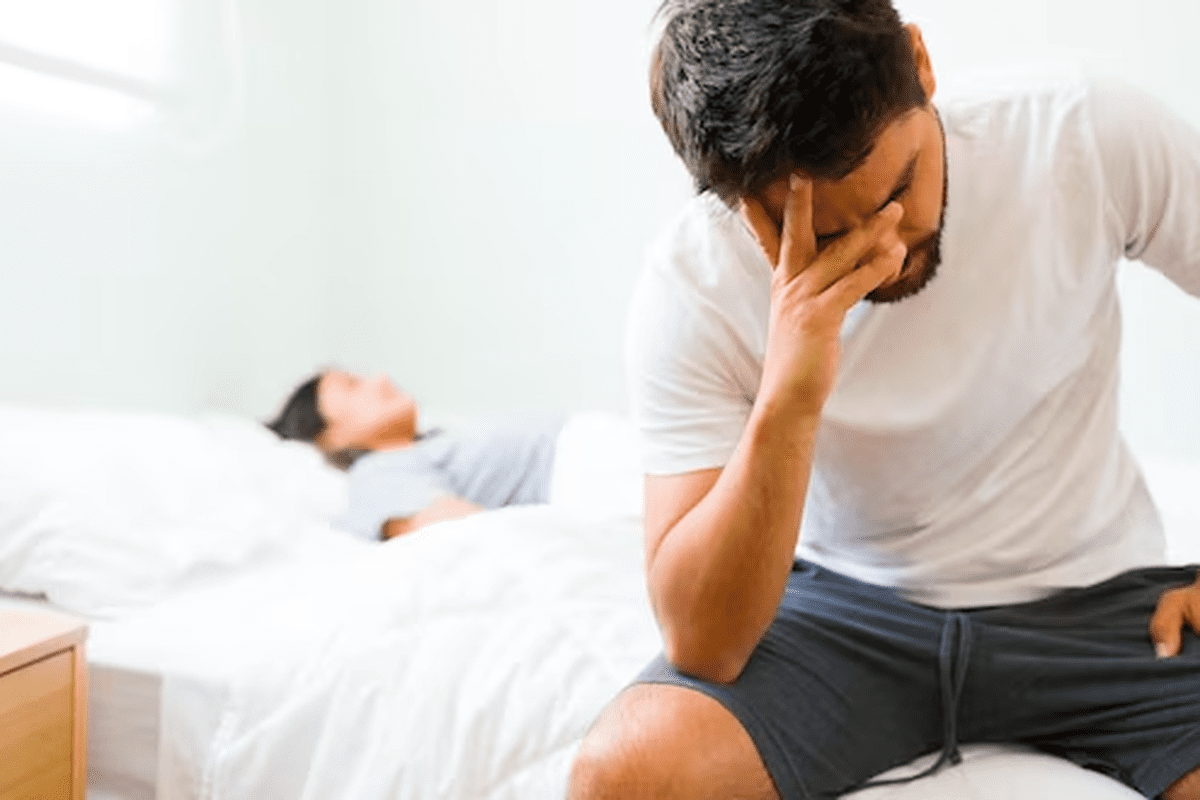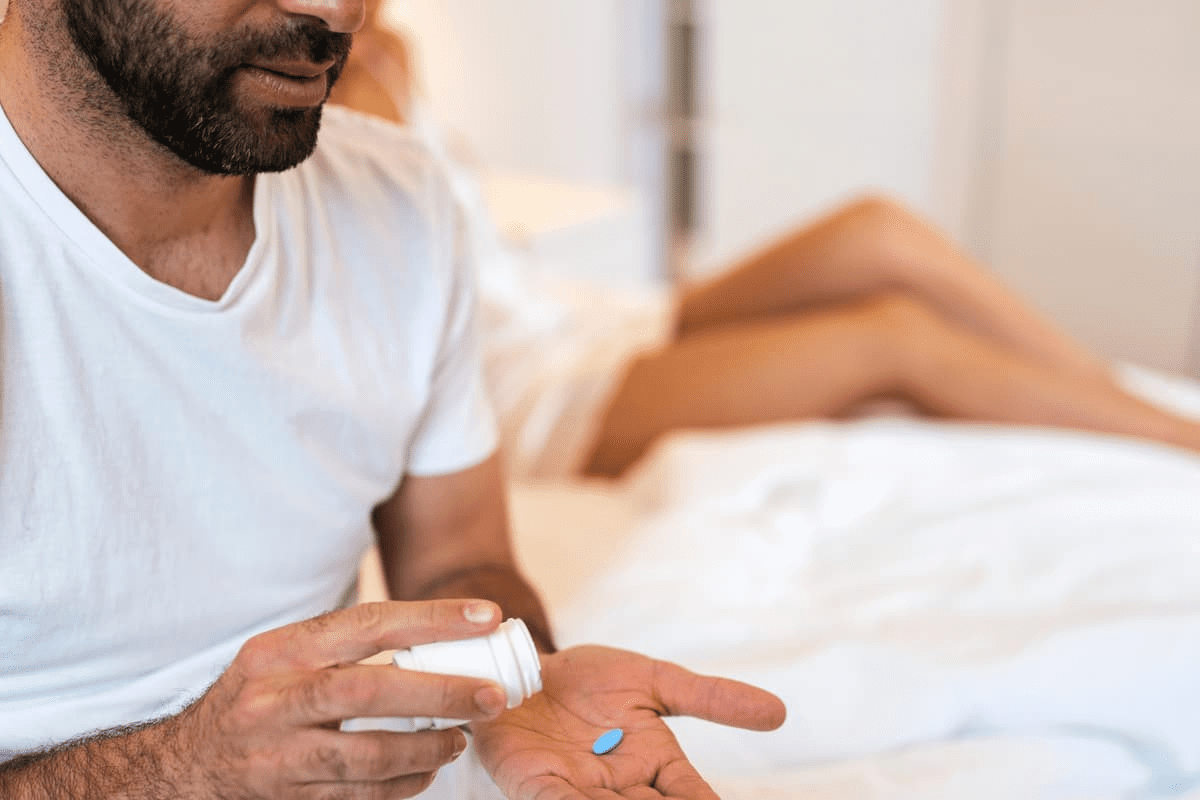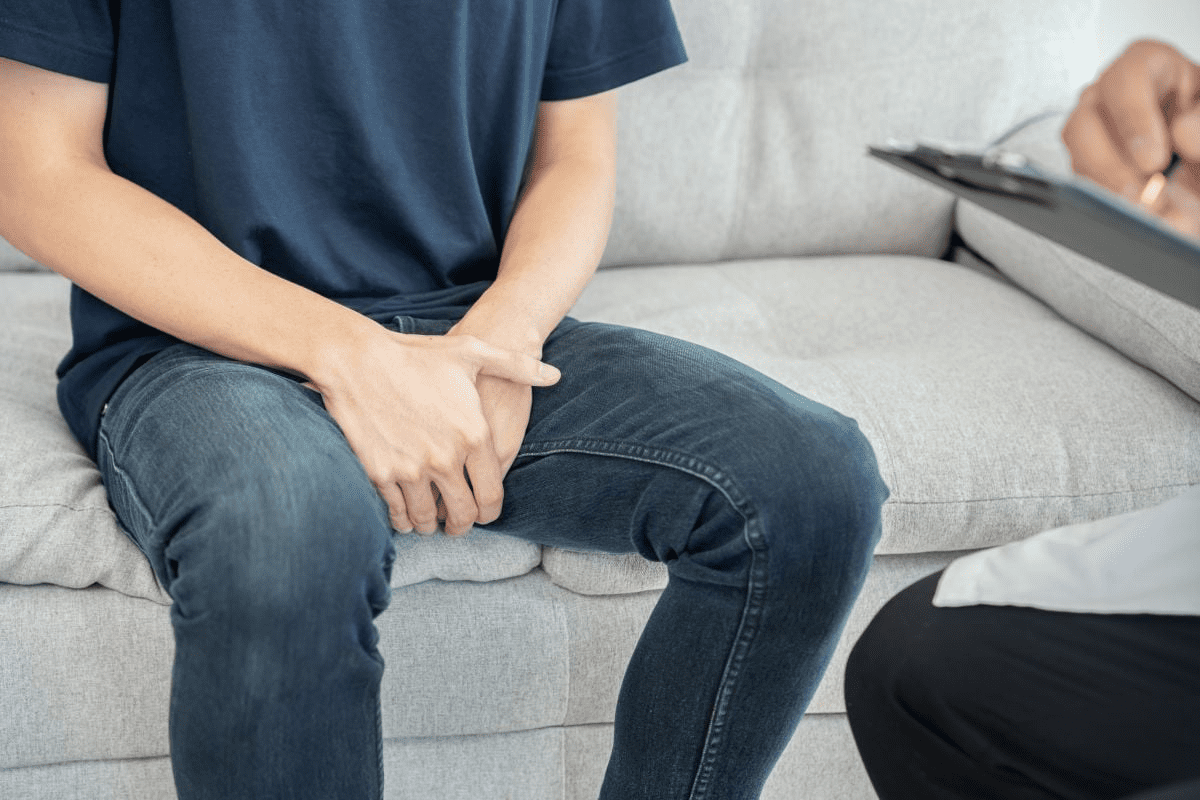
Millions of men worldwide suffer from benign prostatic hyperplasia (BPH). This condition causes the prostate to grow, leading to Lower Urinary Tract Symptoms (LUTS).
Symptoms of LUTS include urgency, frequency, and a weak urinary stream. These symptoms can greatly affect your daily life and well-being.
At Liv Hospital, we focus on treating LUTS related to BPH. Our approach is centered on you, combining expert diagnosis with innovative care. This helps you take back control of your urinary health and improve your quality of life.
What is benign prostatic hyperplasia with luts (Lower Urinary Tract Symptoms)? Understand the condition and how it impacts your daily life.

BPH, or Benign Prostatic Hyperplasia, is a non-cancerous growth of the prostate gland. It can greatly affect a man’s quality of life. Knowing about BPH starts with understanding the prostate’s role in men’s health.
The prostate gland is a small, walnut-sized organ below the bladder in men. It surrounds the urethra, the tube that carries urine from the bladder to the penis. The prostate’s main job is to make seminal fluid, which helps and protects sperm during ejaculation. The prostate gland is made up of muscular and glandular tissues, and its size can change over a man’s life.
Benign Prostatic Hyperplasia happens when the balance between cell growth and death in the prostate is lost. As men get older, this balance shifts, causing the gland to grow. This growth can block the urethra, making it hard to urinate and causing symptoms. The development of BPH is a complex process involving hormonal changes, cellular growth factors, and other molecular mechanisms.
Understanding BPH’s development is key to seeing its impact on men’s health. As we age, the chance of getting BPH goes up. This makes it a big health issue for older men.

LUTS includes many urinary symptoms. They are divided into three main types: storage, voiding, and post-micturition symptoms. These symptoms often affect men with Benign Prostatic Hyperplasia (BPH) and can greatly reduce their quality of life.
Storage symptoms deal with urine in the bladder. The most common ones are:
These symptoms can be very bothersome. They can disrupt daily activities and sleep.
Voiding symptoms happen when you’re urinating. Common ones include:
Voiding symptoms can be embarrassing. They may also cause frustration.
Post-micturition symptoms occur after you’ve finished urinating. They include:
These symptoms can be very distressing. They can affect a person’s confidence and overall well-being.
It’s important to understand the different types of LUTS. By categorizing symptoms, healthcare providers can create effective treatment plans. This helps alleviate symptoms and improves the quality of life for those with BPH.
Benign Prostatic Hyperplasia (BPH) is a big reason for Lower Urinary Tract Symptoms (LUTS). But, it’s not the only one. Knowing this is key for finding and treating the problem.
We’ll look at how BPH leads to LUTS. We’ll also talk about other reasons for these symptoms. This shows why a full check-up is important.
BPH can lead to LUTS in a few ways. As the prostate grows, it can:
The main issue is the urethra compression. This can cause weak urine flow, trouble starting to pee, and not emptying the bladder fully.
BPH is a common cause of LUTS, but not the only one. Other reasons include:
LUTS can come from a mix of these factors. A detailed check-up is needed to find out why someone has LUTS.
Getting the right diagnosis is vital for a good treatment plan. Understanding the link between BPH and LUTS helps doctors give better care. This improves how patients feel and do.
It’s key to understand BPH with LUTS to help aging men. As men get older, BPH and LUTS become more common. This makes it a big health issue.
The link between age and BPH with LUTS is clear. Research shows that more men are affected as they get older. This starts around age 40.
These numbers show BPH with LUTS is a big problem. We need good ways to manage it and plan for healthcare.
Several things can increase your chance of getting BPH with LUTS. These include:
Knowing these risk factors helps us spot and treat BPH with LUTS early. This can make symptoms less severe and improve life quality.
BPH and LUTS symptoms can vary from mild to severe. They can affect your daily life and overall health. Knowing these symptoms is key to knowing when to see a doctor.
Mild symptoms of BPH and LUTS include:
These symptoms can be managed with lifestyle changes and regular check-ups. But, it’s important to watch for any changes and talk to a healthcare provider.
As BPH gets worse, symptoms can get more serious and may include:
Moderate to severe symptoms can really affect your quality of life. They might need medical treatment.
Seek medical help if you have:
Getting a diagnosis and treatment early can greatly improve your situation. It can also lower the risk of serious problems.
Symptom Severity | Common Symptoms | Recommended Action |
Mild | Nocturia, frequency, weak urine flow | Lifestyle adjustments, monitoring |
Moderate to Severe | Urinary retention, recurrent UTIs, hematuria | Medical intervention |
“Recognizing BPH symptoms early and knowing when to seek help can greatly improve your life and treatment results.”
A healthcare professional’s insight
Knowing about BPH and LUTS symptoms helps you manage your condition better. It can improve your quality of life.
Diagnosing Benign Prostatic Hyperplasia (BPH) and Lower Urinary Tract Symptoms (LUTS) is a detailed process. It includes looking at medical history, doing a physical exam, and running various tests. This approach is key to correctly identifying the issue and finding the best treatment.
The first step is a detailed initial assessment and medical history. We ask a lot of questions to understand the patient’s symptoms and how they affect daily life. We talk about urinary issues like needing to go often, feeling urgent, or having a weak stream.
We also ask about other health conditions, medications, and lifestyle factors. These can all play a role in urinary symptoms.
A physical exam is a big part of the process. We do a digital rectal exam (DRE) to check the prostate’s size, shape, and feel. This exam gives us important information about the prostate and helps spot any problems that might be causing symptoms.
To further check BPH and LUTS, we use several tests and procedures. These include:
These tests help us find out what’s causing the symptoms. They guide us in creating a treatment plan that works well for the patient.
The table below shows the main diagnostic tests and what they do:
Diagnostic Test | Purpose |
Urinalysis | To check for urinary tract infections or other issues. |
PSA Test | To check prostate health and find any problems. |
Urodynamic Studies | To look at bladder function and urine flow. |
Cystoscopy | To see inside the bladder and urethra. |
Ultrasound | To look at the prostate and bladder. |
By using the info from medical history, physical exam, and tests, we can accurately diagnose BPH and LUTS. Then, we create a treatment plan that meets the patient’s specific needs.
LUTS, a common problem linked to BPH, affects a man’s physical, mental, and social life. The symptoms of LUTS can be very bothersome. They can greatly reduce a man’s quality of life.
The physical effects of LUTS can be very hard to deal with. Men with LUTS often have to urinate a lot, feel urgent, and have a weak urine flow. These symptoms can make everyday tasks hard and cut down on productivity.
For example, men might have to plan their outings around finding restrooms. This can limit their social and work life. It can make them feel isolated and frustrated.
The psychological effects of LUTS should not be ignored. The worry about urinary leakage or needing to go to the bathroom a lot can cause anxiety and depression. Men might feel too embarrassed to go out, leading to social withdrawal.
The social impact is big too. Men might stay away from social events or travel because of their symptoms. This can hurt their relationships and overall social life.
LUTS can really mess up sleep patterns. Nocturia, or needing to urinate at night, is common. It can wake men up many times, causing sleep deprivation and fatigue.
This not only hurts their physical health but also their mental well-being. It makes it hard for them to function during the day.
LUTS can also badly affect sexual function. Men with LUTS might have erectile dysfunction or a lower libido. This can further lower their quality of life. The connection between LUTS and sexual problems is complex, involving both physical and mental factors.
It’s important to treat LUTS to improve urinary symptoms and keep sexual health and overall well-being in check.
Men with BPH and LUTS have many treatment choices. These range from simple steps to surgery. The right treatment depends on how bad the symptoms are, your health, and what you prefer.
For those with mild LUTS, waiting and watching is often the first step. This means keeping an eye on symptoms and not rushing to treat them unless they get worse. Simple changes like drinking more water and training your bladder can help manage symptoms.
When symptoms get more serious, doctors might suggest medicines. There are two main types: alpha-blockers and 5-alpha-reductase inhibitors. Alpha-blockers help relax muscles in the prostate and bladder, making it easier to pee. 5-alpha-reductase inhibitors, on the other hand, shrink the prostate over time.
Medication Options:
Medication Class | Examples | Benefits | Potential Side Effects |
Alpha-blockers | Tamsulosin, Alfuzosin | Relax prostate and bladder neck muscles | Dizziness, Orthostatic hypotension |
5-alpha-reductase inhibitors | Finasteride, Dutasteride | Shrink the prostate | Decreased libido, Erectile dysfunction |
For those with more severe symptoms or who don’t get better with medicine, surgery might be needed. The most common surgery is TURP, which removes extra prostate tissue. Other options include laser treatments and open prostatectomy for more complex cases.
New treatments for BPH with LUTS are being studied. New options like UroLift and prostate artery embolization are being explored. These aim to reduce symptoms with fewer side effects and quicker recovery times.
Finding the right treatment can be tough. But with the help of healthcare providers, men can find a plan that fits their needs. This can greatly improve their quality of life.
Changing your daily habits can help manage LUTS linked to BPH. Making smart choices about what you do every day can ease symptoms. This can make life better for men with LUTS.
It’s key to manage how much fluid you drink if you have LUTS. Drinking less in the evening can cut down on nighttime trips to the bathroom. Also, stay away from caffeinated and alcoholic drinks. They can make your bladder upset and make you pee more.
Your diet is important for managing LUTS. Eating more fiber can stop constipation, which can make urinary problems worse. Eating a diet full of fruits, veggies, and whole grains is good.
“A healthy diet is not just about managing symptoms but also about overall well-being.”
Some foods and supplements might help with LUTS symptoms. But, talk to a doctor before changing your diet or adding supplements.
Regular exercise can help manage LUTS by boosting health and easing symptoms. Exercise also helps with weight control. Being overweight can increase the risk of BPH.
Bladder training helps by making you hold your urine longer. This can make you pee less often and improve bladder function.
By making these lifestyle changes, men with LUTS can lessen their symptoms. This can greatly improve their life quality. Always talk to a healthcare provider to find the best strategies for you.
Benign Prostatic Hyperplasia (BPH) with Lower Urinary Tract Symptoms (LUTS) can cause serious health issues if not treated. We will look at the risks and consequences of not treating BPH and LUTS. It’s important to seek medical help early.
Untreated BPH can lead to urinary retention. This happens when the prostate blocks urine flow, making it hard to fully empty the bladder. This can cause:
Urinary retention can greatly affect a person’s quality of life. It causes discomfort and anxiety.
Untreated BPH with LUTS raises the risk of UTIs. When urine isn’t fully emptied, bacteria can multiply, leading to infections. Recurrent UTIs can cause:
Managing BPH and LUTS is key to preventing such infections.
An enlarged prostate can cause bladder stones and kidney damage. Bladder stones can lead to:
Kidney damage can result from prolonged obstruction and infection. This can lead to chronic kidney disease.
The complications of untreated BPH with LUTS can affect overall health. They can impact not just urinary health but also:
We emphasize the importance of early medical intervention. It’s key to prevent these complications and maintain health and well-being.
Managing Benign Prostatic Hyperplasia (BPH) and Lower Urinary Tract Symptoms (LUTS) is key to a better life. Knowing about the condition and its symptoms helps a lot. Choosing the right treatment can greatly lessen the effects of BPH and LUTS.
Handling BPH and LUTS needs a full plan. This includes changing your lifestyle, using medicines, and sometimes surgery. If you’re feeling symptoms, seeing a doctor is a must to find the best treatment.
Being proactive in managing BPH and LUTS can really help. It can make symptoms go away, stop problems from getting worse, and make you feel better overall. We stress the need to know about BPH and LUTS, get diagnosed, and treated. We urge you to talk to a doctor to make a treatment plan that’s just for you.
In short, dealing with BPH and LUTS needs a team effort. By understanding how they’re connected, you can start managing them well. This leads to a better life for you.
LUTS stands for Lower Urinary Tract Symptoms. These symptoms are often linked to Benign Prostatic Hyperplasia (BPH).
Symptoms include frequent need to urinate and weak urine flow. Dribbling after urinating is also common.
First, a doctor will assess you. Then, a physical exam and tests like uroflowmetry are done.
Mild symptoms might just need watching. For others, alpha-blockers or surgery might be needed.
Yes, managing fluids, diet, and exercise can help. So can bladder training.
Untreated BPH can cause urinary retention and infections. It can also lead to bladder stones and kidney damage.
It can make daily life hard. It affects sleep, sex, and mental health, lowering quality of life.
It gets more common with age. Many men are affected as they get older.
Yes, age, family history, and lifestyle play a role. These factors can increase the risk.
The ICD-10 code is for billing and insurance. Always check the latest guidelines for the correct code.
National Center for Biotechnology Information. (2025). What Is LUTS in BPH and How Does. Retrieved from https://www.ncbi.nlm.nih.gov/books/NBK558920/
Subscribe to our e-newsletter to stay informed about the latest innovations in the world of health and exclusive offers!
WhatsApp us